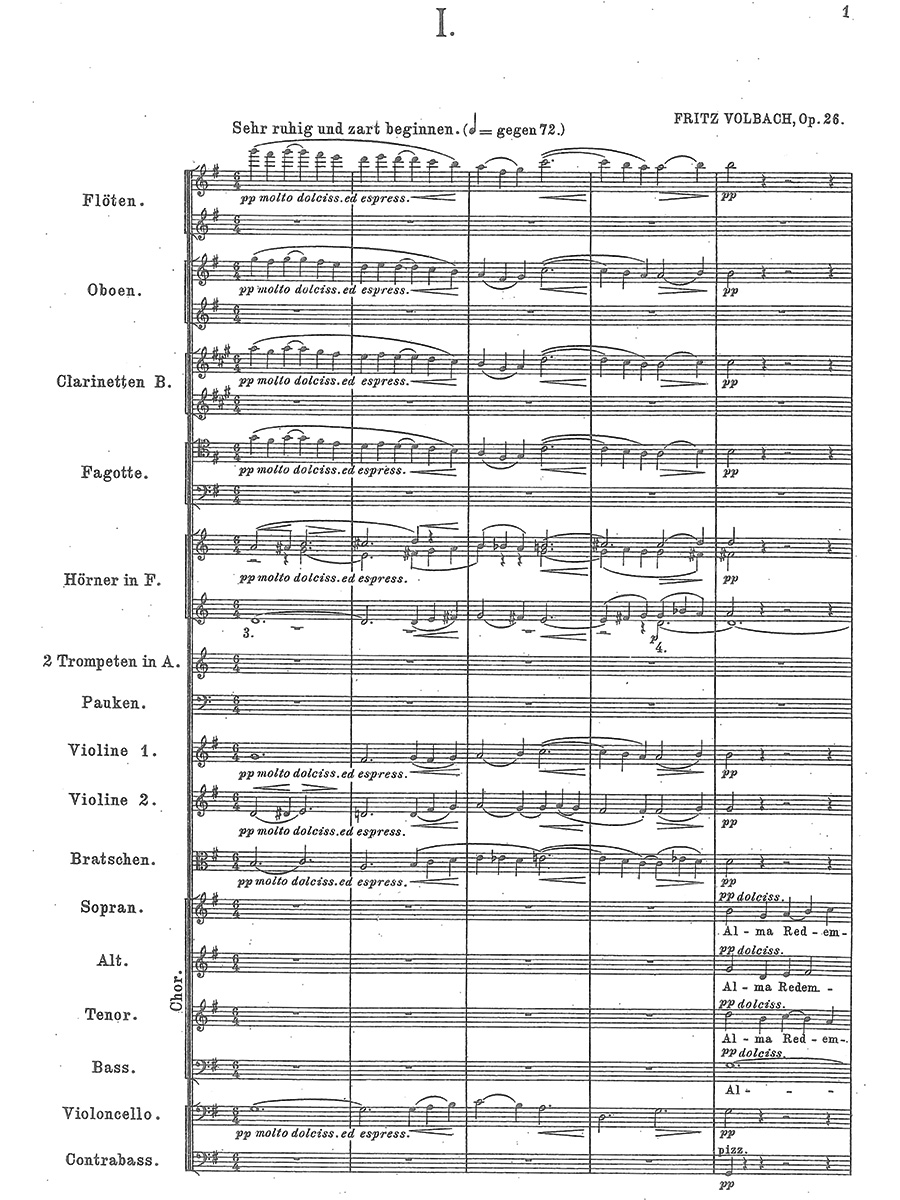Raffael Op. 26 for chorus and orchestra, op. 26
Volbach, Fritz
25,00 €
Preface
Fritz Volbach
Raffael
Drei Stimmungsbilder, for chorus and orchestra, op. 26
(b. Wipperfürth, 17. December 1861 – d. Wiesbaden, 30. November 1940)
Preface
Fritz Volbach studied music at the Cologne Conservatory and in Berlin, where he took a special interest in church music and choral music. From 1892 to 1907 he was a choral conductor in Mainz and later directed music at the universities of Tübingen and Münster. He wrote a number of books on musical subjects, including plainsong and the music of Handel. He composed three symphonic poems for orchestra, one symphony, and a considerable body of choral music with and without orchestra. His music displays a fluent command of Brahmsian counterpoint and of late Romantic idioms. The choral work Raffael was composed in 1903. It was dedicated to the memory of Franz Wüllner, the conductor, who died in 1902.
Raffael, subtitled ‘Three Impressions’, takes three of the four Marian Latin antiphons from the middle ages and sets them as illustrations of three of Raphael’s paintings of the Madonna. He did not set the fourth, ‘Ave regina cælorum’, even though there are other Madonnas by Raphael he could have chosen. Each setting is based on the plainsong melodies traditionally attached to that antiphon. The Raphael paintings were reproduced alongside the music in the original publication.
The painting illustrated in the first piece is the Madonna di Foligno, painted for Sigismondo de’ Conti, chamberlain to Pope Julius II, in 1511. It was removed from Rome by Napoleon and returned in 1815 to the Vatican, where it now hangs. The city of Foligno, de’ Conti’s home town, is seen in the background of the painting. The words are the Marian antiphon ‘Alma redemptoris mater’ and the chorus’s first entry is based on that plainsong melody.
The second is the Madonna del Granduca painted in 1505 in Florence, where it now hangs in the Pitti Palace. It is named after a late-eighteenth-century Grand Duke of Tuscany to whom it belonged. The Latin text is another Marian antiphon, ‘Salve regina’ whose plainsong is heard at the beginning. Scored for female chorus with prominent parts for solo violin and harp, this movement has a serene charm that matches the simplicity and directness of Raphael’s painting.
The third movement depicts the Sistine Madonna, commissioned in 1512 by Pope Julius II for the church of San Sisto in Piacenza. In 1754 it was bought by King Augustus III of Poland and placed in Dresden, where it is still to be seen. Its text is the ‘Regina cœli’ antiphon, whose melody forms the first choral entry. A vigorous fugue on ‘Hallelujah’ follows, and later the plainsong melody and the fugal melody combine. With trombones and tuba joining in, a colossal dominant pedal prepares for the final peroration.
Hugh Macdonald, 2016
For performance material please contact Breitkopf und Härtel, Wiesbaden.
Score Data
| Score No. | 1805 |
|---|---|
| Edition | Repertoire Explorer |
| Special Edition | |
| Genre | Choir/Voice & Orchestra |
| Size | 210 x 297 mm |
| Performance materials | |
| Piano reduction | |
| Specifics | |
| Printing | Reprint |
| Pages | 82 |
